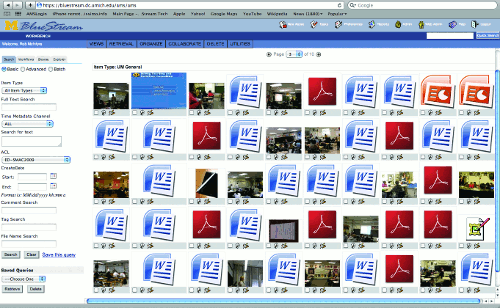Case Study: A Holistic Approach to DAM
[This is a vendor-supplied case study. We accept submissions from vendors based solely upon their value to our readers. -Ed.]
The ability to share and access multimedia content across a distributed network infrastructure can yield tremendous value and utility for organizations of all sizes. Yet social and technical barriers often prevent these types of initiatives from taking flight. These challenges can be especially daunting for organizations in higher education, where concerns over student and faculty privacy, copyrights and intellectual property, students' rights, and even patients' rights can have a paralyzing effect on multimedia infrastructure build-outs. These issues are exacerbated in legacy IT environments where individual departments re managed as "silos" with little or no cohesive management and/or interoperability.
Determined to overcome these challenges in pursuit of an advanced framework for media-intensive academic work, the University of Michigan embarked on a sophisticated digital asset management (DAM) implementation beginning in 2003. The university's BlueStream DAM system would function as a centralized utility that could facilitate media-driven research, teaching, learning, and community service across the university's student and faculty population, streamlining the construction and collection of rich media assets to yield significant productivity and academic gains for users.
The BlueStream infrastructure would be built upon IBM Enterprise Content Manager (ECM) and ViewCast Media Server, the precursor to ViewCast's VMp (ViewCast Media Platform) Production module. University of Michigan specified these products on the heels of an extensive RFP process, having identified the combined IBM/ViewCast platform as the strongest solution for enabling users to ingest, manage, store, and publish digital media with the least amount of technical friction.
This digital media infrastructure would serve as "scaffolding" around which the university's developers and academic teams can build discipline-specific applications without rearchitecting the underlying technology stack.
 The BlueStream Framework
The BlueStream Framework
Many DAM systems treat digital assets as a single digital file, with little ability to recognize and correlate associated versions, derivatives, and metadata. University of Michigan's BlueStream system, however, was designed to take a more holistic approach to digital asset management. It provides the ability to create and organize original digital files, subsequent file versions, and alternative file formats; data generated through media analysis, file level metadata; and time-coded metadata. Accessible through a common management interface, BlueStream serves as a centralized repository that streamlines workflows and also simplifies the creation of specialized services for analyzing and transcoding digital media. This method, of course, lifts the computing burden of processing, storing, and organizing rich media files off of the individual users and moves it to the BlueStream server infrastructure.
Here is an overview of the key technical components and processes that underpin the BlueStream DAM system:
Media acquisition and storage. Large media files-particularly video files-can be extremely cumbersome to move and store, so ease of uploading is an important consideration. BlueStream enables users to simply drag and drop files from the desktop and/or web to upload files as needed. The files (and derivative files) are then stored in a managed storage environment with policy-driven access parameters.
Metadata tracking and management. Metadata enables the core media organization framework for any effective DAM system, providing the descriptive data necessary for search, retrieval, and use. With BlueStream, EXIF and XMP metadata is encoded within the header of certain file types and is recognized automatically by the system. A metadata look-up function can be employed to match metadata automatically from XML files, spreadsheets, and/or external databases with the associated media assets. BlueStream also enables users to tag metadata manually through the web interface as needed.
Search and organization. BlueStream search capabilities are enabled via full-text indexing of metadata (file-level and timecoded) and text-based documents. A search can be executed using simple terms or Boolean strings, and results are returned in an intuitive "ranking by relevance" layout. Users can assemble their own virtual collections of files based on defined file and/or metadata associations. These collections use a file pointer construct to ensure the individual files are not duplicated in the system.
Access control. Every aspect of an asset in the BlueStream system is secured using access control lists (ACLs). These ACLs define access rights and user privileges. Asset-level access control enables seamless collaboration among workgroups, with tight controls over who is enabled to view, modify, and delete assets.
Related Articles
The Interoperable Master Format (IMF) offers the appeal of a universal distribution format for all video, but it's not quite there yet. Here's where development stands today.
23 Oct 2017
Managing media assets is about far more than storing and finding clips, and cutting-edge MAM and DAM systems are moving to the cloud and taking on VR and 4K.
30 Sep 2017